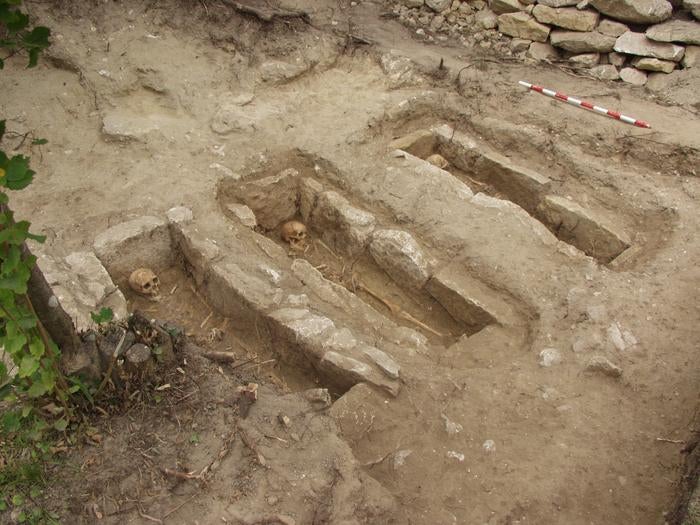DNA study unravels mystery of how cave-dwelling Christians survived centuries of conquest and plague
Findings shed light on life of cave communities enduring medieval conquests in Spain and Portugal
A small devout Christian community survived a tumultuous medieval period living in isolation and practising endogamy in a network of underground caves carved into Spain’s rocky outcrop, new DNA analysis revealed.
Between the 8th and 11th centuries AD, the Iberian Peninsula, consisting of modern-day Spain and Portugal, underwent a massive upheaval and population shifts due to invasions from the first Muslim dynasty, the Umayyad Empire.
This dynamic era was marked by violent religious competition, power struggles, and significant movement of humans, laying the foundation of modern Europe.
However, there are minimal written resources and archaeogenetic studies from Iberia about this time, researchers say.

During this period, Muslim armies crossed from North Africa to establish a territory known as Al-Andalus which eventually covered most of Iberia.
But how Christian kingdoms persisted in the north of this Peninsula to later reclaim lost territories is a subject of ongoing studies.
While archaeologists have often focussed research on the major cities in the region, rural sites home to distinct cave-dwelling communities remain to be extensively studied.
The new research, published in the journal Science Advances, assessed the remains of 33 individuals from Las Gobas, an ancient cemetery in northern Spain.
This complex used between the 7th and 11th centuries AD is notable for its church and living areas carved into caves.

DNA analysis of the nearly 40 remains from the site revealed that inhabitants of the caves were of local Iberian ancestry with “very minimal contribution from North Africans” despite proximity to Al-Andalus.
“Our findings indicate that this community stayed relatively isolated for at least five centuries,” study co-author Rodríguez Varela said.
Researchers found DNA evidence showing that the period saw high levels of inbreeding among the cave’s inhabitants suggesting they practised endogamy, marrying only within their community.
For instance, some of the earliest males were found to be likely close kins with small variations observed in their Y-chromosomes, which are passed down from fathers to sons.
Scientists also found evidence of violence breaking out among the inhabitants, revealed by some remains showing signs of sword blows to the head.
Based on these findings, researchers suspect the earliest inhabitants of the cave complex may have had some military experience.
The population also endured the spread of diseases from animals, scientists say.

Archaeologists found cases of the bacterium Erysipelothrix rhusiopathiae which originates from domestic animals and causes skin disease in humans.
One individual appeared to be infected with a bacterium that spreads via bad meat, and another was infected with a smallpox virus variant similar to one known to have spread in northern and eastern Europe.
“We reveal intricate family relationships and genetic continuity within a consanguineous population while also identifying several zoonoses indicative of close interactions with animals,” scientists wrote.
“By the 10th century, smallpox seems to have affected Las Gobas, likely spreading through Europe rather than via Islamic routes, as was previously theorized for how smallpox entered Iberia,” Anders Götherström, another author of the study said.

Researchers did not find any significant increase in North African or Middle Eastern ancestries at the site over time likely because the community remained isolated.
The cave complex, according to researchers, reveals a community “marked by isolation, violence and devout worship”.
“What started as a cave-dwelling group evolved into a typical rural village that endured its share of disease,” scientists write in The Conversation.
“As such, the site offers a rare and detailed glimpse into the lives of people whose stories are often eclipsed by history told from the perspective of major urban centres and their elites,” they said.
Subscribe to Independent Premium to bookmark this article
Want to bookmark your favourite articles and stories to read or reference later? Start your Independent Premium subscription today.


Join our commenting forum
Join thought-provoking conversations, follow other Independent readers and see their replies
Comments